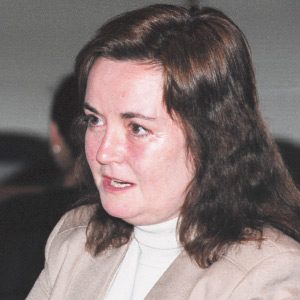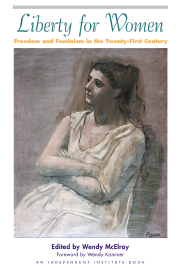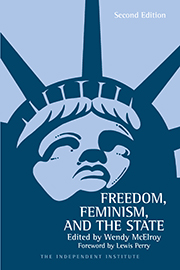Moses Harman (1830–1910) is the sort of social visionary whom historians often overlook, even though his influence during his own lifetime was immense. Harman lived most of his life in the American midwest, sharing many of the values that are associated with the region: he was a soft-spoken, hard-working, and devoted family man with an unswerving sense of right and wrong.
He was also one of the most stubborn and persistent nineteenth-century Americans involved in the fight to preserve individual rights. Most of his writing remains buried in the pages of the now obscure periodical he edited for 24 years. His main impact derives from his decades-long fight for freedom of speech, which resulted in numerous imprisonments and culminated in his breaking rocks at Joliet (Illinois) prison at the age of 75.
George Bernard Shaw referred to Harman’s last imprisonment in a letter to the New York Times (September 26, 1905), in which he explained why he would not visit the United States: “The reason I do not go to America is that I am afraid of being . . . imprisoned like Mr. Moses Harman. . . . If the brigands can, without any remonstrance from public opinion, seize a man of Mr. Harman’s advanced age, and imprison him for a year under conditions which amount to an indirect attempt to kill him, simply because he shares the opinion expressed in my Man and Superman that ‘marriage is the most licentious of human institutions,’ what chance should I have of escaping?”
Harman and Shaw shared the same opinion of nineteenth-century traditional marriage: it was defined by laws and customs that enslaved women, who were stripped thereby of the right to their own wages, custody of their children, and the ability to defend themselves against physical or sexual attack by their husbands. As a personal matter, Harman believed in monogamy and conducted his life without scandal. But as a point of social theory and practice he insisted that “true marriage” must be an equal union between consenting adults in which the state had no rightful place. It was his insistence on speaking out for true marriage and the rights of women that led to Harman’s many years of legal persecution under the Comstock Act, which forbade the circulation through the mail of information on “obscene” matters such as birth control or marriage reform.
With the streak of stubbornness that often arises in the American personality, Harman persisted in speaking out because, as he phrased it, “I believe in Freedom-equal freedom. I want no freedom for myself that all others may not equally enjoy. . . . The Spencerian formula: ‘each has the right to do as he pleases, so long as he does not invade the equal right of others,’ tells what freedom means. It is equivalent to saying that liberty, wedded to responsibility for one’s acts, is the true and only basis of good character, or of morality.” He wished to offer women equal freedom with men to control their bodies and their property, especially within the context of a true marriage. It was part of his lifelong battle to secure what he called the right of private judgment in moral matters.
Little Formal Schooling
Born in western Virginia to a poor family, Moses Harman grew up in southern Missouri. Although he had only a few months of formal schooling, the young Moses became an avid reader, especially after an accident left him crippled. At 16 he began teaching school and then went on to attend Arcadia College, in Missouri; the education came at great financial sacrifice to his family. Harman soon became galvanized by the ideal of abolitionism-the pre-Civil War movement that demanded an immediate cessation to slavery on the grounds that every human being had a right to his own body. When the Civil War erupted, Harman was unable to enlist in the Union army owing to his lameness. But he remained such an outspoken abolitionist that the pro-slavery county of Crawford, Missouri, once voted to run him out because of his unpopular sentiments.
When Harman married Susan Scheuck, the daughter of a Union sympathizer who had been executed by a roving band of Confederates, their marriage was a harbinger of his later commitments. Although the ceremony was conducted according to law, the young couple also entered into a personal contract that based their voluntary union on love, not duty. Their two children, George and Lillian, were both born in Missouri. A third child died with Susan during birth in 1877. One can only speculate on how deeply watching the death of his much-loved wife in childbirth influenced Harman’s later insistence on the availability of birth control information to women.
In 1879, Harman took his young children to live in Valley Falls, Kansas, where his cousin Noah was a well-to-do farmer. Moses took a job teaching at the district school, and soon became known for speaking his mind in a dignified but blunt manner. One exchange in particular would determine much of his future course.
Harman became involved in the Valley Falls Liberal League, a local branch of the National Liberal League, which sought to separate church and state. This was an issue around which many figures in the American individualist tradition gathered after the Civil War. In the words of Harman, the local “club was the successor of an older club . . . which meetings were conducted on the plan of equal rights for all, regardless of race, color, party or creed.” The League soon became involved in an exchange conducted with clergymen in the local Republican paper on “issues dividing the current and popular theologies from the deductions of modern science.” Although respectful of Christianity, Harman argued the scientific point of view under the pseudonym “Rustic.”
When the newspaper proved unwilling to continue the voluminous debate, the Liberal League issued its own periodical, the Valley Falls Liberal in August 1880, with Harman serving as one of the unofficial editors. It became the foremost voice in Kansas of liberalism in the nineteenth-century sense of individualism in active opposition to state interference. In 1881, it was rechristened the Kansas Liberal, and Harman shared editorship with Annie L. Diggs, a well-known populist. After a dispute about prohibition, which the teetotaling Harman opposed in the belief that temperance must be voluntary, he assumed sole control.
The Kansas Liberal would eventually be renamed Lucifer, the Light Bearer (1883–1907) for which Harman would soon become notorious nationwide. The name was unfortunate because it raised the worst suspicions within and created an emotional backlash among many religious-minded people. Indeed, since periodicals as controversial as Lucifer were able to publish without facing the legal problems that constantly confronted Harman, it is probable that at least some of his subsequent persecution was sparked by the provocative title. Harman had chosen it innocently. He wrote, “Lucifer, the ancient name of the Morning Star, now called Venus, seems to us unsurpassed as a cognomen for a journal whose mission is to bring light to the dwellers in darkness.” When more cautious minds advised against the name, Harman characteristically dug in his heels and continued to maintain that “words are not deeds” and that neither the state nor society could rightfully restrict the words he chose.
The Censor’s Watchful Eye
If the kindly and cultured Harman had been the only one to choose the words printed in Lucifer, his policy might have proven harmless. For better or worse, however, Harman permitted his contributors to write what they pleased. He believed that absolute freedom of speech cleansed society by allowing individuals to feel honestly drawn or repelled by certain ideas, and to understand their reactions rather than suppress them. Lucifer was not salacious, but merely blunt in its social and political discussions. For censors of the day, this was enough.
In June 1886, Lucifer published a letter from W.G. Markland, which described an especially brutal instance of forced sex within marriage and called it rape. Indeed, it may have been the first discussion in print of this subject on the American scene. The letter was graphic, but used no words that were not to be found in a dictionary or a medical textbook.
In sending the issue of Lucifer containing the letter through the mails, Harman ran afoul of the Comstock Act, which provided a penalty of up to ten years’ imprisonment for anyone who intentionally mailed or received obscene material. Ominously, the word “obscene” had not been defined by the Act. But Anthony Comstock, its author in 1873 and organizer of the New York Society for the Suppression of Vice, defined “obscenity” to include the discussion of and protest against rape within marriage. Under the Act, the Post Office assumed the power to destroy mail arbitrarily without either reimbursing the sender or providing due process.
There is a sense in which Lucifer was an unlikely target for Comstock: it seemed to be an idyllic family business, a labor of love. Harman described the set-up: “I did the office work, assisted by my son George, aged fifteen, and daughter Lillian, aged thirteen who had already learned to set type. We lived on a little fruit farm one mile from the printery at which the typesetting and press work were done. Editorial work was mainly done at home, in the early morning hours and late at night, while much of the day was spent by all three at work on the farm, raising fruits and vegetables, from the sale of which we supplied our own daily wants, besides helping to defray the expenses of publication; the folding and wrapping of the paper being done at night by the entire family, including wife Isabella, whom I had married since our removal to Kansas.”
This contented picture was shattered in February 1887, when a warrant was served for the arrest of the editors and publishers of Lucifer: Moses Harman, Edwin C. Walker, and George Harman. Harman and his son were taken to Topeka where, on executing bonds of $500 each to appear at the April term of court, they were allowed to go home. (Walker, and his 16-year-old wife, Lillian Harman, were already in jail for their non-state marriage, which Moses called an “autonomistic marriage.”)
The Legal Persecution of Moses Harman
After attending the April term court, Moses and George Harman were ordered to execute another bond and to reappear the following July. At the July term, they were told the weather was too hot to present the charges against them to the grand jury. They executed another bond to appear at the October term and went home. Over the next eight years, Harman was forced to waste large portions of time traveling back and forth to Topeka at the legal whim of the court and to spend scarce money in executing dozens of bonds, even though one bond alone would have answered the requirements of law.
Finally, in October, the accused learned the nature of the charges brought against them. The grand jury indicted Lucifer on 270 counts of obscenity, which were eventually quashed because neither the judge nor the district attorney could discern a legally intelligible charge in any one of the counts. Not to be thwarted, the district attorney procured a new set of indictments, totaling 216 counts in all. The indictment was based on four newspaper articles, though charges were withdrawn on two of them. The articles included the Markland letter and a letter to the editor written by Celia B. Whitehead, a well-respected mainstream reformer. Ironically, Whitehead’s letter argued against the birth control that Comstock considered obscene.
As a consequence of their withdrawing from the management of Lucifer, charges were dropped against George Harman and Walker in 1888. Moses Harman stood alone as the sole defendant. He was a defiant one. In the June 22, 1888, issue of Lucifer, he reprinted the Markland letter-along side the 38th chapter of Genesis, to demonstrate that the language of the letter was no more offensive than that of the Bible.
Meanwhile, Harman’s ordeal stirred up a storm of protest. As a result of the controversy, the district attorney continued the case until 1890, when he would no longer be in office.
In February 1890, Harman was arrested on fresh charges arising from a letter written by a New York physician, known as the O’Neill letter. Graphic in its language and speaking from 19 years’ experience in the medical practice, Richard V. O’Neill testified that he had seen many cases of the derangement or early death of women caused by “rape within marriage,” similar to what had been described in the Markland letter. For publishing the O’Neill letter, Harman was escorted to Topeka once more, then released on bail of $1,000.
In May 1890, Harman was finally tried and sentenced to five years’ imprisonment and a $300 fine for mailing the Markland Letter. The following August he was released by virtue of a writ of error, but a new bond was required. In January 1891, Harman was sentenced to one year’s imprisonment for the O’Neill letter. Another writ of error and another bond ensued in March. The legal harassment continued for years, until in June 1895 a new sentence was passed under which Harman was lodged in the Kansas state prison at Lansing. On release in 1896, the exhausted editor moved his family and Lucifer to Chicago.
Of this period, he later wrote, “[F]or more than nine years, I was never for one moment free from the ‘shadow of the jail’-that is, I was either securely locked within prison walls or was under bonds outside of those walls, with the threat of imprisonment, like the sword of Damocles, constantly hanging over my head.” He continued by proudly declaring, “Meantime Lucifer, the real object of the prosecutors, did not die; Lucifer did not suspend; Lucifer did not retract; Lucifer, ‘Son of the Morning,’ did not cease to shine on friend and foe alike.”
The Final Imprisonment
From battling the Comstock laws, Moses Harman had acquired the aura of a folk hero, which extended into mainstream periodicals. But the move to Chicago did not prevent the same sort of legal problems that had arisen in Topeka. Postal harassment preceded Harman’s final arrest, with Lucifer being denied the use of second-class mail rates until the matter was appealed to Washington. Then the Chicago post office began to confiscate and destroy certain issues it declared to be obscene. One issue was destroyed because it contained an article by the venerated feminist Alice Stone Blackwell that had been reprinted from the Woman’s Journal. Another article declared obscene by the postal authorities was an excerpt from a United States Bureau of Animal Industry report that had been issued by authority of Congress.
Finally, Harman was indicted and tried in May 1905 for mailing two articles: “The Fatherhood Question” (written by an author identified only as T.V.A.), arguing in an inoffensive manner that every prospective mother had the right “to select the best possible conditions for” procreation, and “More Thoughts on Sexology” by Sara Crist Campbell, who was nearly 70 years old, arguing that sexual ignorance inflicted needless pain on women. The court refused to allow testimony about Harman’s medical condition, and the judge’s instructions to the jury left little doubt as to his opinion that the articles were legally obscene. Thus, at the age of 75, Moses Harman was sentenced to one year at hard labor.
From Cook County jail in Chicago, Harman wrote a “hail and farewell” letter to his friends, restating the object of Lucifer’s publication: “to help woman to break the chains that for ages have bound her to the rack of man-made law, spiritual, economic, industrial, social and especially sexual, believing that until woman is roused to a sense of her own responsibility on all lines of human endeavor, and especially on lines of her special field, that of reproduction of the race, there will be little if any real advancement toward a higher and truer civilization.”
At Joliet, where he broke rocks during the bitter winter months, Harman’s health deteriorated disastrously. A transfer to Leavenworth-secured by the determined intervention of family and friends-probably saved his life. There, he spent a large portion of his remaining sentence in the hospital.
On release in 1907, the 76-year-old Harman changed Lucifer’s name to the American Journal of Eugenics. The format became more scholarly, and the focus shifted more firmly to improving reproduction and the human race, a subject that captivated many early twentieth-century reformers. The eugenic theories of Harman and similar individualist radicals were based largely on the work of such popular scientists as Francis Galton (coiner of the word “eugenics”), who believed the human race could be improved through heredity. For Harman, the main barrier to proper reproduction was the state. He believed its oppressive marriage, divorce, and anti-birth control laws almost ensured that poverty-stricken women would give birth to ill-nourished, sickly children. In calling for removal of the state from reproduction, rather than stricter regulation, the American individualists were a unique voice for individual freedom within a movement that tended toward state control.
On January 30, 1910, Moses Harman died in Los Angeles, where he had moved in 1908. The American Journal of Eugenics died with him. Although two memorial services were held for the venerated editor-one in Los Angeles, the other in New York City-the most fitting memorial may well have been a letter written to Lucifer by Lizzie Holmes almost 20 years earlier. She called Harman’s periodical “the mouthpiece, almost the only mouthpiece in the world, of every poor, suffering, defrauded, subjugated woman.”









